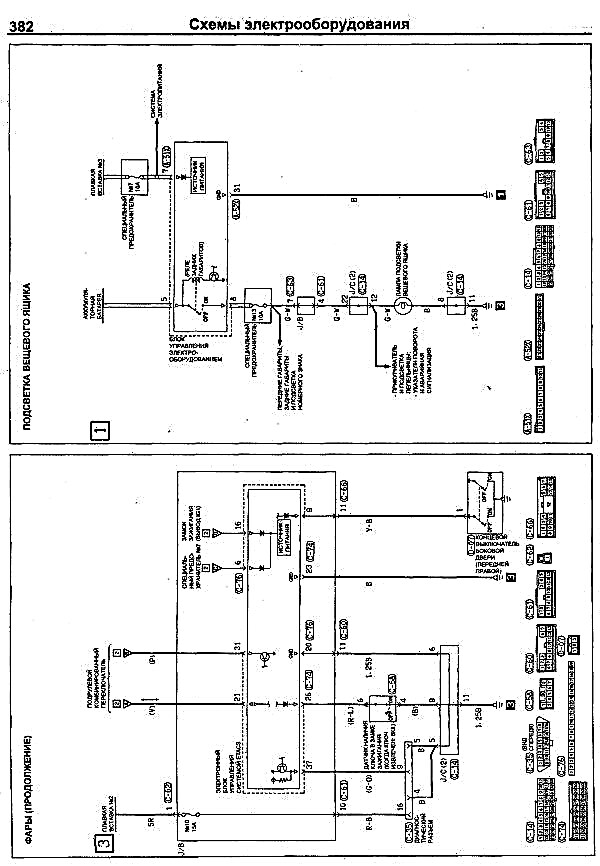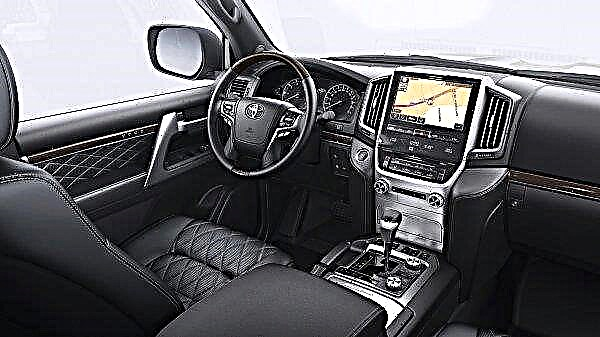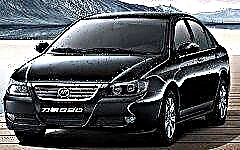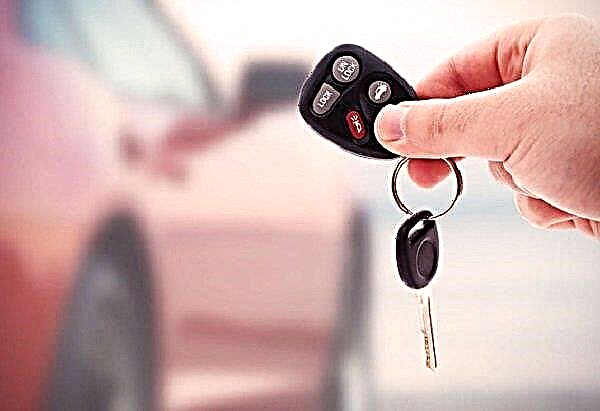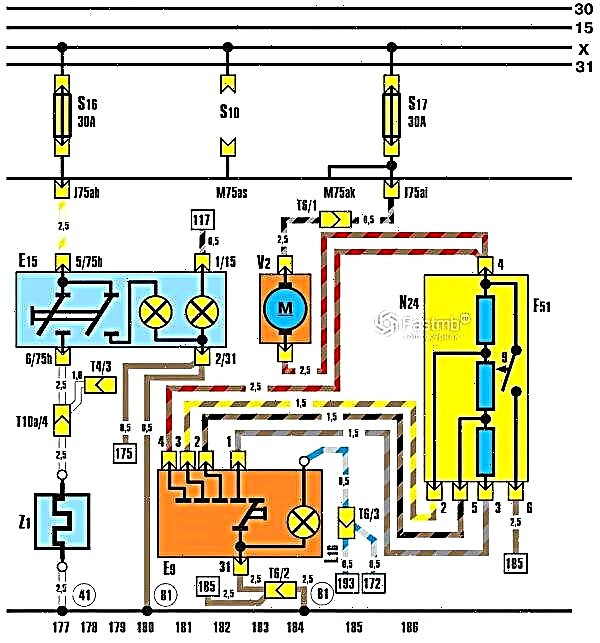

The content of the article:
- Minivan: characteristic history, pros and cons
- Basic rules for choosing a model
A minivan for a large family is by no means a luxury, but a necessity. When there is not enough space in a conventional four-door car, designed for five seats, the minivan solves the problem of "extra" passengers.
But how to make the right choice, given that there are a lot of various models of this class on the modern automotive market?
Minivan: characteristics, history, pros and cons

In the photo: Fiat Multipla 600
Very often, minivans are described as "a cross between a D-class minibus and a regular C-class passenger car." Typically, this vehicle has three rows of seats to accommodate 7 to 9 people.
For the first time, minivans appeared on the automotive market a long time ago - back in 1914. The model bore the long name Alfa 40/060 HP Aerodinamica and attracted the attention of onlookers on the roads, but did not receive much popularity due to its high price.
Four-five-seater cars existing at that time in Europe were significantly cheaper, and it was believed that they were quite enough for "family" trips.
The next model appeared only in the early thirties, but then the safety of an excessively bulky car "pumped up". And only in 1956, Fiat designers announced the start of mass production of the Fiat Multipa 600, which was positioned as a family car.
The car was no longer than the base Fiat 600, but had three rows of seats. This model was partly waiting for the fate of the previous minivan: in 1960, revised safety standards forced Fiat to curtail production.
And only in the eighties of the last century, minivans finally began to be produced in large quantities. This process was initiated by the French, entering the market with their Renault Espace.
Benefits of minivans
One of the main advantages of this class of cars is their "multitasking". The body of the minivan is designed in such a way that the car can be used both for transporting a larger (compared to a conventional passenger car) number of passengers, and for transporting bulky luggage: for this it is enough to remove the rear row seats, or even two.
Minivans, as a rule, are great for both family trips and for small business applications, when a minibus is too much, and a passenger car with 4-5 seats is no longer enough.
The sloping body shape, the absence of a pronounced trunk and hood give the minivans excellent aerodynamic characteristics. Equipping some models with an all-wheel drive transmission makes such a car even more attractive for trips out of town.
Minivans also turned out to be very comfortable for tall and overweight passengers: the space in the cabin of such a model is much larger than in an ordinary passenger car, and the sliding doors allow you to enter and exit the cabin without risking injury.
Disadvantages of minivans
Like any type of car, the minivan, along with the advantages, has a number of disadvantages:
- Due to the fact that in such models there is no protruding part of the trunk, driving in mud leads to instant contamination of the rear window.
- The spacious interior and large doorways lead to the fact that heating the car in the cold season is another quest: as a rule, in minivans it is banally cold in winter.
Manufacturers are trying to solve the problem with the help of climate control systems and heated seats, and not only the driver's, but all passenger not too warm.
- Finally, the absence of a partition between the passenger compartment and the luggage compartment can upset passengers with unpleasant odors: in the passenger compartment, there will always be "aromas" from the luggage compartment, into which this very compartment flows smoothly.
Against the background of these shortcomings, there is good news - in terms of safety, modern minivans are in no way inferior to the rest of the classic models of passenger transport, completely overcoming the "childhood illness" of the beginning and middle of the last century.
Basic rules for choosing a model
With a seemingly rather short and comprehensive description of this class of cars, do not forget that the modern market offers the buyer a huge variety of all kinds of car configurations to choose from.
And in the basic version, minivans from different manufacturers may differ in functionality and other features. The reason for this phenomenon is that minivans are multi-purpose vehicles and can be used for various needs:
- family car for large families;
- long journeys;
- use in small business, for small firms.
As a result, someone focuses on the "family" of transport, someone on the transportation of luggage, someone on passenger capacity and representativeness, and so on. Therefore, when starting to choose a model, you should pay attention to the following points.
1. We estimate the capacity

In the photo: Toyota Alphard salon
Perhaps this is one of the main reasons why the buyer turns to this class of cars. Minivans can be designed for five, seven or nine seats. If the buyer's goal is simply to buy a more spacious car, then a five-seater minivan will be enough.
If the car is purchased for a large family, or it is planned to transport employees of a small company on it, as a rule, they pay more attention to the models with seven and nine seats.
Also, it will be useful to have a greater number of passenger seats for those who like long-distance car travel: a spacious cabin on a long journey is an indisputable plus (but do not forget about the difficulties with heating!).
2. We analyze the technical characteristics

As a vehicle designed for more passengers and carrying capacity, minivans usually have a high-quality suspension with a significant margin of safety. In this regard, you do not need to worry.
But when choosing between a gasoline and diesel engine, preference should be given to the diesel option. Unlike a gasoline engine, a diesel engine has a higher throttle response and high torque, and therefore, it will be much easier to drive such a car on the road.
Again, not the last argument in favor of models with a diesel engine is their economy: diesel fuel is still cheaper than gasoline.
As for the gearbox, everything is not so critical here. The best choice would be the one to which the car enthusiast is already accustomed.
3. We take into account the level of security

Very often, a minivan is chosen in order to transport children in it. The lion's share of buyers for this class of cars are large families. Naturally, in this case, the safety of the car is at the forefront.
Seats must be securely fastened for child car seats. All passenger seats must be equipped with seat belts. The automatic door locking function is very important.
Security is generally not an aspect worth saving on. Therefore, when choosing a minivan model, it makes sense to consider options equipped with additional programs for determining the degree of driver fatigue, calculating the distance to the nearest vehicle, monitoring functions for "blind spots", and a parking assistant.
Yes, all these features and equipment are additional costs, but hardly anything is more valuable than the lives of family members.
4. We analyze the ergonomics of the cabin

Photo: Geely minivan
Regardless of the purpose for which a minivan is purchased, an important point will be such an option as shifting or dismantling the rear row seats - this allows you to quickly and easily turn the car into a full-fledged passenger or semi-truck and vice versa.
Passages should remain between the seats - this is very convenient. If you plan to use the car for travel, all kinds of pull-out shelves, drawers, compartments for placing luggage bags will be useful.
5. We calculate the possibility of installing an additional trunk

If you plan to use the car for long-distance travel, and just for the needs of a large family, you should pay attention to the models that provide for the installation of an additional roof rack.
6. We look at the type of doors

In the photo: Honda Odyssey
Currently, in the automotive market, you can find minivans with both sliding and swing doors. Options with sliding doors are more ergonomic. This can be especially critical, for example, when parking in narrow streets of old cities or at small gas stations.
7. Assess functionality and usability

The presence of a climate control system is an important point for a minivan! Due to their spaciousness and the presence of wide doorways, these mishins "suffer" from the cold interior in the winter season, and in the summer they need cooling. Therefore, it is worth initially taking care of the presence of a system that will provide an acceptable microclimate inside the cabin.
Also, an excellent choice for the middle lane would be a model with heated not only driver's, but also passenger's seats.
Such "little things" as cup holders, turning headlights, heating system for side mirrors will be useful - but here the choice depends on the thickness of the wallet: most minivan models offer all these options in more "advanced" trim levels.
8. We look at the exterior

The appearance of the car is not the last moment that influences the choice of a particular model, and minivans are no exception.
Some will like the more conservative solution inherent in European car brands. Those who prefer non-standard and bold solutions of automobile designers will pay attention to the brainchild of Japanese designers.
As a rule, if a minivan is purchased for the needs of a small company, the buyer chooses a more conservative, "solid" option.
9. Choosing a manufacturer

No matter how much the manufacturers of the world auto industry say that almost all firms can now offer the buyer a full-fledged minivan for his needs, the leaders in this market segment are two manufacturers:
- Volkswagen (the most famous model is Caravelle);
- Toyota (Corolla-Verso model).
The brainchild of Volkswagen is popular for its legendary German usability and build quality. Toyota attracts those looking for a stylish exterior combined with a luxurious interior.
10. We take into account the cost

In the photo: Ford Tourneo Custom
Finally, not the least important criterion is the cost of the car. In principle, you can pick up a minivan in the secondary market, then it will cost the buyer from 400 thousand rubles.
When it comes to new cars, there is a fairly wide range of prices. Here are just some of the models with brief characteristics and cost:
- Chrysler - 7-8 passengers, gasoline engine, length - 5.2 m, weight 2 tons, price - from 4.2 million rubles;
- Ford Tourneo Custom - 9 passengers, two base options, diesel engine, price - from 2.4 million rubles;
- Hyundai H-1 - 8 passengers, diesel engine, there are all-wheel drive versions of the model, price - from 1.12 to 2.44 million rubles;
- Peugeout Traveler - 7 passengers, diesel engine, price in basic configuration - from 2.15 million rubles;
- Mercedes-Benz Vito Tourer - 9 passengers, there are rear-wheel drive, front-wheel drive and all-wheel drive options, diesel engine, price - from 2.59 million rubles excluding additional options;
- Toyota Alphard - 7 passengers, gasoline engine with direct injection and reduced fuel consumption, price - from 4.75 million rubles;
- Volkswagen Transporter Combi is a multivariate model from 5 to 9 passengers, a turbodiesel engine, front-wheel drive or all-wheel drive models with a price of 2.13 million rubles in the basic configuration.
Summing up
Basically, the strategy for choosing a minivan is not that difficult. At the forefront are, first of all, those criteria that, in fact, distinguish cars of this class from other passenger cars. Ergonomics, load capacity, safety and, of course, price are important.
Having chosen a certain model, it will not be superfluous to ask those who are already using it in our conditions. Pay attention to the reviews of those who had a chance to test the car on the road throughout the year.


